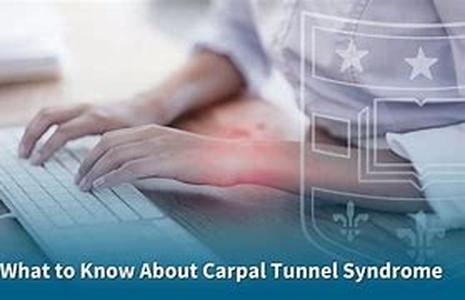
An Orthopedic Surgeon, Dr. Jonathan Cluett, Said That Carpal Tunnel Surgery Could Be Done. It Is Not Only Available, But Also Very Much Effective In Terms Of Treatment.However, Carpal Tunnel Surgery Is Not Really Needed Until Symptoms Showed No Improvement After A Long Period Of Non- Surgical Treatment. Also When It Restricts Normal Daily Routines Because Of Persistent Loss Of Feeling Or Coordination In The Fingers. Lastly, When The Median Nerve Has Been Damaged As Indicated In Test Results.The Most Common Procedure Is The Carpal Tunnel Surgery Release. It Involves Making An Incision In The Fibrous Sheath Around The Carpal Tunnel. By Releasing Tension In The Carpal Tunnel, The Pressure Is Removed From The Nerve.In Order To Perform An Open Carpal Tunnel Surgery Release, The Surgeon Makes A Four- Centimeter Incision Across The Middle Of The Palm. The Surgeon Carefully Dissects The Tissues Down To The Carpal Tunnel. The Carpal Tunnel Is Opened Up To Relieve The Pressure On The Nerve. It Only Takes About 15 Minutes And Can Be Performed Under Local, Regional, Or General Anesthesia.There Are A Lot Of Individuals Who Are Afraid Of The Big Needles For Injections Or Even Dread The Smell Of Hospital. To Avoid Carpal Tunnel Surgery, Early Diagnosis And Treatment Are Important To Avoid Permanent Damage To The Median Nerve. A Physical Examination Of The Hands, Arms, Shoulders, And Neck Can Help Determine If The Patient's Complaints Are Related To Daily Activities Or To An Underlying Disorder. This Can Also Rule Out Other Painful Conditions That Mimic Carpal Tunnel Syndrome. The Wrist Is Examined For Tenderness, Swelling, Warmth, And Discoloration. Each Finger Should Be Tested For Sensation, And The Muscles At The Base Of The Hand Should Be Examined For Strength And Signs Of Atrophy. Routine Laboratory Tests And X-rays Can Reveal Diabetes, Arthritis And Fractures. In Conducting The Tinel Test, The Doctor Taps On Or Presses On The Median Nerve In The Patient's Wrist. The Test Is Positive When Tingling In The Fingers Or A Resultant Shock-like Sensation Occurs. The Phalen, Or Wrist-flexion, Test Involves Having The Patient Hold His Or Her Forearms Upright By Pointing The Fingers Down And Pressing The Backs Of The Hands Together. The Presence Of Carpal Tunnel Syndrome Is Suggested If One Or More Symptoms, Such As Tingling Or Increasing Numbness, Is Felt In The Fingers Within One Minute. Often It Is Necessary To Confirm The Diagnosis By The Use Of Electrodiagnostic Tests. In A Nerve Conduction Study, Electrodes Are Placed On The Hand And Wrist. Small Electric Shocks Are Applied And The Speed With Which Nerves Transmit Impulses Is Measured. In Electromyography, A Fine Needle Is Inserted Into A Muscle. Electrical Activity Viewed On A Screen Can Determine The Severity Of Damage To The Median Nerve. Ultrasound Imaging And Magnetic Resonance Imaging Are Also Of Big Help In Determining Whether The Patient Needs To Undergo A Carpal Tunnel Surgery.





